#easy to say since I love gouache haha
Text
Gustavo Magalhães.
Bio: My name is Gustavo Magalhães and I am a Brazilian illustrator/cartoonist. I live in Caçapava, a small town in São Paulo state. I have worked as an illustrator since 2013.
As an editorial Illustrator, I've been published by The New Yorker, Golf Digest, Forbes, The New Republic, GQ Magazine among others. The first time I was commissioned by The New Yorker was in 2021, for "The Critics" session on a portrait of Sandra Oh" for her new show at the time, "The Chair," which aired on Netflix.
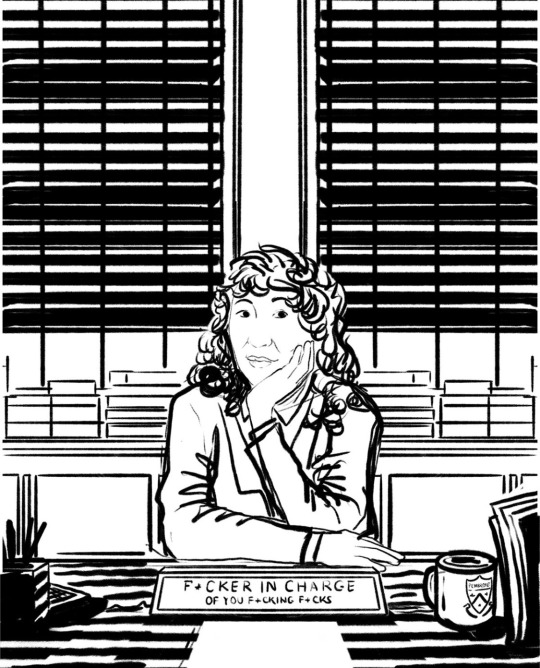


Sketch, refinement, finished piece.
I also have a web comic strip called "Curb Talk." It's published twice a week in a classic Comic Strip format.
Lately, I am a Senior Illustrator at a Studio called "Fried Design Company ,'' in Springfield, Missouri. But I work from Brazil.



AOIKTYE Procreate Keyboard for Ipad / Apple Pencil / Ipad Pro
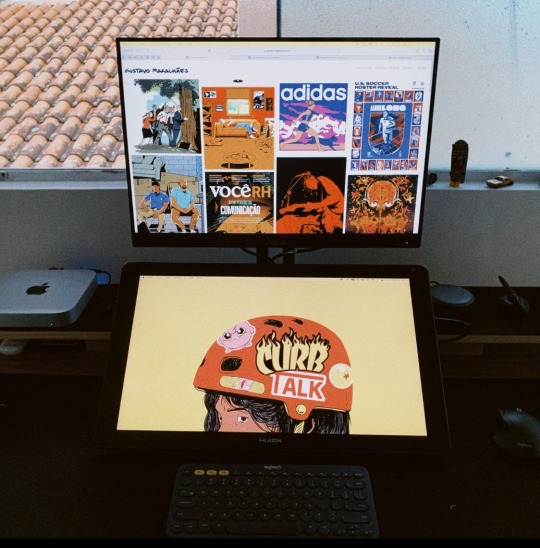
Mac Mini / Asus Proart PA248QV Monitor / Huion Kanvas Plus 22 Display
Tools of choice: My process of work is mixed, I like to sketch the first thumbs and sometimes more advanced pieces on paper and "ink" / color them using digital tools. It's been 5 years that more than 90% of my final pieces are done in digital, and along that period I discovered that I'm a person that likes to do a significant amount of tests while inking, and digital tools help me a lot in that.
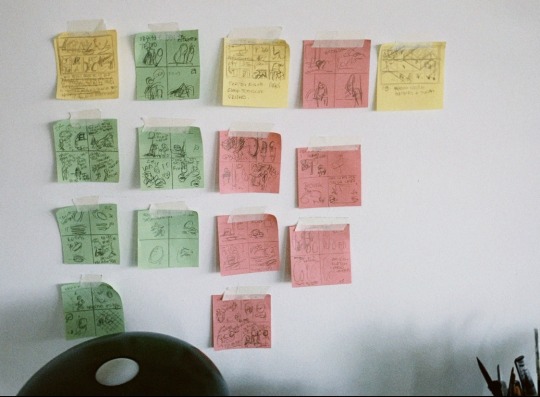
Lately, I've been trying to achieve an inking process that I could do both on paper and on digital, that way I could do my pieces however I feel on that day, and my comic strip has been a good place for this test field, and I'm enjoying that mix very much.


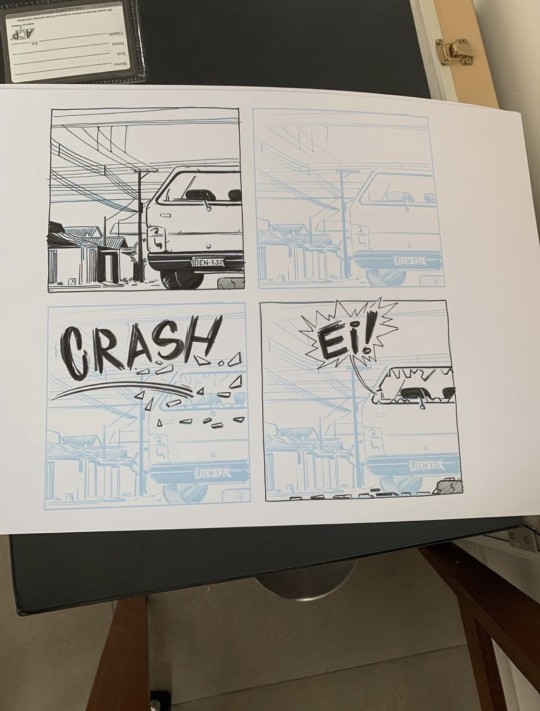


Pentel .09 Mechanical Pencil / Staedtler Water Brush / Staedtler Pig LIner 0.3 / Royal Talens No. 2 Brush
If you were asking me "You are on a desert island and can bring just one setup with you," I'd say I would bring my iPad. It allows me to sketch with an "analogic feel," where it's important to feel that you are actually crafting something. But it also gives me all the testing possibilities the digital work has.
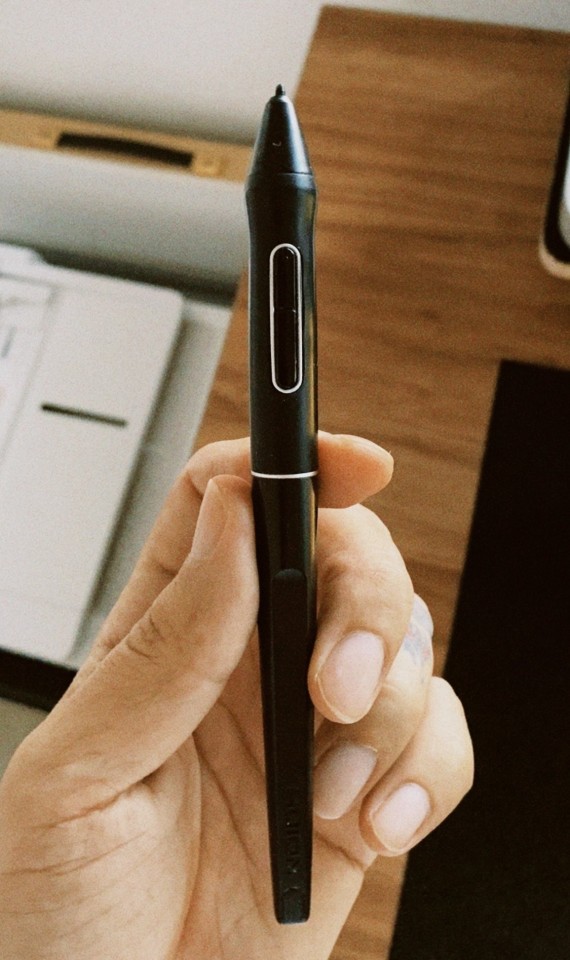
Huion Display pen Battery Free Pen PW517
Tool I wish I could use better: Coloring in general, but mostly painting. It's always a struggle to translate what I have in mind to the final piece. And there are some aspects of texture and rendering that you can only get in analogical tools like gouache, oil, watercolor. Of course there are excellent artists that do those digitally, but there are certain aspects that you need a physical touch to achieve and I have never done anything like that. Maybe one day.
Tool I wish existed: A chair + desk set that automatically corrects your bad posture whenever your body is hurting or sitting in the wrong way. I hate having lower back and wrist pains while working, haha!
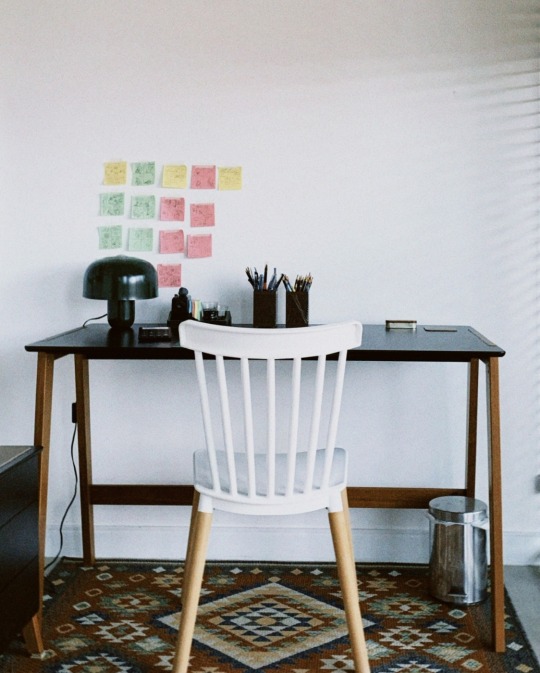
Tricks: One thing I brought from the full analogical days is an adaptation of the "drawing from your shoulder thing." Personally, I found it very hard to do, so I use a bandana on my pen hand, and use the other hand to pool this and drag. This is a thing that helps me a lot when drawing straight lines with a handmade feel, instead of just using shapes in Photoshop or any digital tool for precise lines.
Misc: "Go easy on yourself and have fun!"
I never thought I could work with illustration. I spent almost a decade working in the aircraft industry (half of it doing freelance illustration jobs for local bands and brands) and the factory mentality lever left my mind, just now (after 10 years as an illustrator, 7 as my main activity), I'm recovering the passion that I had as a young doodling kid. Everyone sees artistic careers as this romantic thing, but it's always a struggle (at least for me) to face your passion as an obligation day to day, and make this trade of time and love for money. So after several years going hard on myself I am finally learning how to be lighter and having more fun and joy in my work.
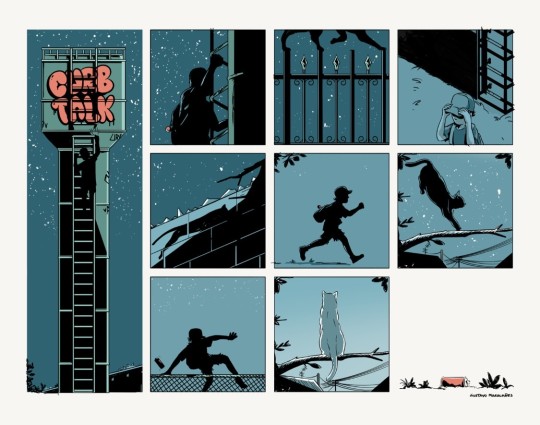
(Outro/Editor's note: I asked Gustavo if he would care to discuss how working in the aircraft industry affected his work as an illustrator):
I think the biggest influence I got from this industry was the routine and how to deal with work. Artists naturally tend to be less rigid in the aspect of routine because of the nature of creativity, and I think that having almost a decade working in another industry in a more conservative environment helped me in how to take it more serious in all aspects, from my day to day process, to how to treat my clients and deadlines.
That's basically the biggest influence and learning I got from this period. How to understand that the work isn't just the drawing and thinking, but everything that happens behind it, from the clothing choice I pick to work at home, from the time management I need to have in order to balance all simultaneous projects I have.
Website, etc.
Portfolio
Curb Talk Comics
Instagram
Twitter

----
If you enjoy this blog, and would like to contribute to labor and maintenance costs, there is a Patreon, and if you’d like to buy me a cup of coffee, there is a Ko-Fi account as well! I do this blog for free because accessible arts education is important to me, and your support helps a lot! You can also find more posts about art supplies on Case’s Instagram and Twitter! Thank you!
17 notes
·
View notes
Photo

Red pine gouache commission, finalized and scanned! I’m pleased with how well this one scanned up, I hardly needed to do any adjustments. Some valuable lessons learned here!
Gouache (Winsor & Newton Designer gouache with touches of Holbein) on Fabriano Artistico 140 lb hot press watercolor paper. Approx. 6.6 x 10.4 inches (16.76 x 26.47 cm).
For commissioner’s use only.
#gouache#commissioned art#traditional media#kirin#fantasy art#creature design#red pine#pine trees#conifer#landscape#scenery#forest#woodland#red cedar#it's true there are things I would change but I'm happy to let it exist this way#gotta know when to let go and smile#easy to say since I love gouache haha#now to get on to the rest of this queue...
954 notes
·
View notes
Note
,, i dont,, know jackshit about naruto,, but,,,,,,, your watercolor pieces are so good??? like???????? SO GOOD?????
Here's the obligatory ask (since I started trying to use watercolors): are you aware of any tips for that particular medium? Like, are the brushes and watercolor quality really important or is that just my imagination? Also, how 2 mix colors and not die-
LMAO thanks!! I’m glad you think so!
I do have a lot of tips for watercolor, but I’ll start with the material questions. I would say that the quality of the tools can be fairly important, but like, it’s not make or break.
Supplies Information:
Disclaimer: None of this is necessary! You can make great art with any material available to you. All materials have different strengths and weaknesses, but you can create things that bring joy with the most rudimentary of supplies.
I tend mostly to use liquid watercolors because I find them easier to control and manage (and I just...like working out of little bottles of liquid with eyedroppers. It’s my ink bias), but they have significant drawbacks. Archival speaking? light will bleed all the color out of what I have created eventually! They aren’t built to last. That doesn’t worry me much because I tend to stack all my drawings up and shove them in a drawer when I’m done, but it’s something to keep in mind. I find them easy to mix and manage in the pallet, and easy to reactivate if they dry out
The brands I use are Dr. PH Martin’s Concentrated/Radiant Watercolor, and Ecoline Watercolor. Between the two, I would recommend Ecoline because they are cheaper, have more consistent texture, and have more in the bottle. Honestly, if the art store near me wasn’t on a huge sale, I never woulda gotten the PH Martins, they’re expensive as hell and just incredibly teeny glass bottles.
BUT, if you want to use watercolor that comes in tubes (which will last longer, give you more options for artistic expression—because the texture ranges from paste to watery, you have all that range to experiment with—and which most watercolor artists prefer in general) there’s a lot more options. The highest quality for the cheapest price I’ve found are the Turner’s watercolor tubes? I don’t always love the texture when I’m wetting the paint because I am picky, but the color is incredibly vibrant, and the prices are incredibly affordable compared to like, schminke or cotman haha. I used these in school and had a great time with them.
Brushes I know a lot less about, like almost nothing honestly, I wish I could give you some concrete advice on brushes but what it really comes down to for me is like, if you like the way it feels in your hand, if you like the way it makes a mark, it’s good. all it exists to do is facilitate You making a mark on the paper with some artistic medium, as long as you are satisfied with it, that’s good.
If you want brush recommendations though, I’ve been told that Princeton’s watercolor brushes (i have a couple from the Heritage and Velvetouch series) are good synthetic brushes for...moderate prices. Brushes are expensive. Usually people recommend you have a #2 and #4 Round, and a smaller detail brush, but again, really, like all things art it all comes down to your preferences, and your needs.
Actual Painting Tips:
Take care of yourself! Treat yourself kindly, forgive yourself for making mistakes. I’m dead serious. It’s impossible to avoid making mistakes, and in watercolor the mistakes are really hard to fix, and usually impossible without the use of gouache or something else opaque, so at some point it’s going to become an exercise in forgiving yourself for making those mistakes, like drawing in pen with no under-sketch.
On a good day, I find this therapeutic. On a bad day, it’s maddening. It’s okay not to make art on a bad day. When it comes to something you do because you enjoy it, and want to continue enjoying it, it’s important not to force yourself to do anything you don’t want to, and to take breaks when you feel yourself getting frustrated.
Paint from Lightest color value to Darkest. If you’re going to paint a character with a bit of a rim-light from some golden sunlight, paint that light light yellow first, top to bottom, and then work your way to the darker colors.
If you’re painting on a tilted surface (I’m guilty of keeping my sketchpad or paper block on my knees) paint from top to bottom. The weight of the water will pull the paint down, so you want to work with gravity, not against it!
Limit yourself. Let yourself only work with one color for a day or so, then only two colors, then only three. When you put yourself in a corner where you don’t have a lot of options, you’ll often find you surprise yourself with what you come up with. Usually, I pick three colors, put them down on my pallet, and leave them there for a week or so, mostly just painting from those colors. It helps me develop a familiarity with how those colors work together, and how they work when I mix them.
Mixing Colors:
another thing I should say about the Dr.PH Martin’s watercolors is that they don’t always mix well. I tried to get a skin tone for Kakashi once out of pink, green, and a little bit of brown, and in the mixture you could see all of the colors that went into it, and it gave a very strange look. I liked it as a color, but it definitely looked weird.
The paint that you use will have properties specific to itself, and you will get more familiar with those properties as you work it. It may mix smoothly on the pallet, it may not, and both of those can be good if you’re willing to work with them.
Because of watercolor’s properties, there’s three main ways to mix it:
One: Mixing in the palette. What it says on the tin—you mix the paint, you put it on the paper. I do this one the most, it just takes a lot of familiarity with your paints to get used to the balances that create the colors you want, just lots and lots of playing around.

Two: Mixing dry. This isn’t really “mixing” per se, but it does the same job, Watercolor is a transparent medium, and one that reactivates when wet, so if you put one color over another, it’s about the same as mixing.

Three: Semi-wet mixing. The combination of the two! You can get some weird effects out of this. I use it sparingly, but I love to use it when I do.
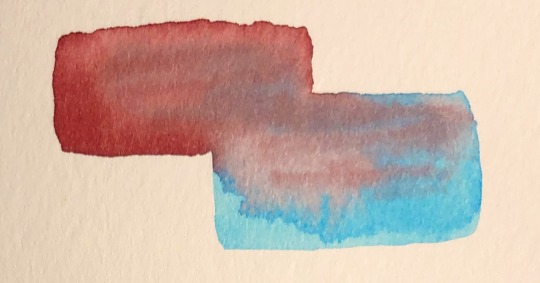
The most useful physical tool for me (just me personally) in mixing is a pallet i have, and while it’s fairly cheap and should last like, idk forever, there are other ways to get a similar effect without it, as long as you give yourself space to mix.

it looks like this, it’s a porcelain pallet (so the cleanup is incredibly easy, unlike my plastic one, which unfortunately wants to hold my color a little) and i use it almost daily. The circular wells are for where you put the bulk of the color you will be using, and the rectangular wells are for mixing either with water, to get more translucent colors, or with other colors. The limited wells but excess of mixing space puts pressure on me not to use too many colors, but to mix them constantly. (but also has enough divided space that I don’t feel anxious about everything getting muddied. i am very particular.)
It’s heavy though, and while its therefore good for sitting on my desk and not getting knocked off by my cat or me, it’s not easily portable, especially as it’s uncovered if that's something that is important to you. Blick’s probably has them, as does...I imagine any other art retailer? They’re fairly popular. Usually around 6-8$ but again, none of these tools are necessary, they are just what suit me personally.
I hope this helps! If I have the energy for it, at some point I’ll post some basic watercolor exercises to help with control and technical skill. You can get very good with any medium just by raw continuous practice, but my teacher last year had us do a lot of exercises that not only gave me a much greater comfort and confidence with watercolor, but that were also just...incredibly meditative to do.
#it wouldnt be basil mokutone if i didnt turn literally every advice post into an excuse to tell people to treat themselves kindly#something something you are your greatest tool and just as you shouldnt leave your brushes in the water you also shouldnt overwork yourself#i got a lot of my supplies very cheap cause the art store near me was closing so lots of it was extremely discounted so i'm very lucky haha#changeside#watercolor#advice#i genuinely hope this helps folks hahaha i dont wanna come off as like idk presumptuous or preachy#long post /
49 notes
·
View notes
Text
My Final Questions and Responses
What materials do you use to create your artworks? What are some of your go to’s and what is something you have always wanted to use/experiment with?
a) I mostly work with ballpoint pens for my more detailed and realistic portraits. I find they are the easiest to use in order to get a wide range of values. Applying more or less pressure can create different values where a felt tip pen or gel pen couldn't do the same. To me it's a pen that's very similar to a pencil in the sense that it's permanent and doesn't smudge. Before I ink is usually sketch with pencil since I will be erasing it. Other materials I use are brush pens, which I mostly use for more stylized drawings, they come in different colors and are really easy to control line weights. I occasionally use markers for flat coloring and for that I use alcohol based markers because they wont blend any water-based pens I use.
I've always loved the look of acrylic and gouache paints and they're really something I want to get good at using but I don't know a ton about color yet, and they're very tricky. I've also always wanted to work digitally, which I plan on trying to soon. I've always liked traditional media because there's an original that you can keep in a sketchbook or something and it's very scary to think you can lose a file to a drawing or accidentally draw it on a canvas is too small.
What influences and inspires your art?
b) I'm always inspired and influenced by other artists I follow and/or art I see on social media. My brother was the most artistic one in the family when we were younger and I think he made me want to get better so that kind of started it. I do a lot of portraits of people with a decorative background, with the subject being the focal point, and unfortunately, it doesn't really have any emotional value, and I don't feel a lot of my art has any influence from my personal life or experiences, and that is something I want to change. As of right now my art is influenced by art I like and art I enjoy seeing. Things that look good or are fun to draw. A couple artists that really inspire me are nvmillustration, Hope Gangloff, Audra Auclair, Thomke Meyer, Sachin Teng, nevahosking, and mckayfelt. A lot of the aspects of their art I incorporate into my own style and experiment with (subject matter, materials, techniques)
I hoard a lot of screenshots and photos of paintings, drawings, colors, photographs, portraits, movie stills, etc. that are inspiring that I keep in a folder on my phone that I go to when I'm lacking inspiration or want to try something new.
Do you have a process for creating art, does it alter frequently and do you find it effective?
c) My process is pretty much the same all the time and works decently, For projects without a ref, I'll just sketch whatever comes to mind in pencil and I'll add things as I go and then I'll ink it. A lot of the time what I imagine creating in the first place will be very different from what I originally wanted it to be. Very often I'll come across an area that is challenging to execute and I'll come up with something to add or change in order to avoid it or cover the area up haha, that's where the post it notes came into play, I liked the idea of having colorful squares and it also meant I could use it to hide my mistakes and try again.
When I'm working from reference I'll usually start with the basic shapes and eyeball the rest, using parallel and perpendicular lines to get angles and the placement of objects in relation to one another, marking where one thing ends and another starts. It's helpful when you're trying to get proportions correct, and is easy to check and compare to the original. It's similar to when you're life drawing and you hold your pencil out to get an angle right and then transfer it to your paper. From there I'll do small fixes to the sketch and make sure everything looks right, adding other elements etc, I'll pull up multiple references of plants, animals, textures, and art that will help me along the way. I'll ink it after and thats usually how it goes. More often than not I'll come across a problem I'll have to fix or sometimes they don't work out.
You have gained a substantial Instagram following, has the extended aspect of social media influenced your art in any way or alternatively how you view your art?
d) I started my Instagram account in 2013 I think, just so I could like one of my friends photos and then I posted one drawing and it go 26 likes or something and so I just kept going. Before that, I was on tumblr and I made a lot of fanart of supernatural or my chemical romance. They got a lot of attention because those groups were very popular and I think that was really affecting what I draw, making it so other people would reblog it and share it around. I didn't have a great following (only about 2.3k) but on tumblr it's more about exposure than a following so it didn't really matter. After I stopped posting fanart and just did random portraits, they didn't get a lot of attention which was really disappointing and my following didn't grow much. So I thought Instagram could be like a fresh start where I could draw whatever or whoever I wanted with no attachments and that's what I did. I was super against seeming like I wanted followers so I didn't tag anyone or anything or seek attention and people just came. I don't think my followers really influence what I draw or how I draw it, because if I don't like what I'm drawing then I won't draw but I would say it changes how often I draw or the amount of effort I put in. I post almost every day and eventually I know I'll run out of things to post so It's kind of motivation to draw something new. I don't know if that's healthy to draw just so I'll get likes or just post because I "need" to. But it works. I still enjoy art and it's just motivation to keep going. I usually just draw something that looks appealing to me, so requests or subject matter that people want doesn't really affect my art because I never go out looking for something to draw in particular.
Having a following is rewarding and makes me feel good about my art but even before social media, I loved everything I made and I thought I was super good, even though I wasn't, and I think social media comes with comparing yourself to other artists and having your art be validated by the number of likes or the audience's reaction which I've seen people freak out and be bummed out about and that's really sad. Once you kind of know that comparison isn't really healthy I think the rewards outweigh the negatives.
What is design to you?
e) Design to me is in everything we make. It's in art, architecture, technology, plastic bag designs, labels, logos, chairs, clothing, even toilet paper and spoons. It's in everything in your house, in text, paintings, TV, photography. It is what we do when we invent and create. Design is thinking of something and making it, it's almost impossible to make something without designing it first. There is bad design that looks bad and isn't functional and there's design that makes out lives easier. The elements and principles of design can be applied to any one of these categories and the application of these elements can make an object or visual spark an emotion or feeling, or just better our lives and improve the product. It's difficult to define but it's easy to find an example because design is everywhere.
0 notes